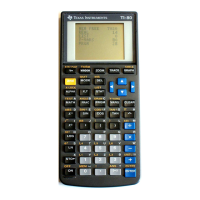substitute these expressions in the function definition
y
s
−s
r
= f
x
s
−q
p
and solve for y
s
y
s
= r $ f
x
s
−q
p
+ s
then take the derivative
dy
s
dx
s
= r $
d
dx
s
f
x
s
−q
p
or [1A]
dy
s
dx
s
=
r
p
$
d
dx
s
f
(
x
s
− q
)
Now since
x
s
= p
$
x + q
x
s
+ dx
s
= p
$
x + p
$
dx + q = p
$
x + q + p
$
dx
x
s
+ dx
s
= x
s
+ p
$
dx
so [2A]
dx
s
= p $ dx
Replace [2A] in [1A]
dy
s
dx
s
=
r
p
$
d
p$dx
f
(
x
s
− q
)
or
dy
s
dx
s
=
r
p
$
d
dx
f
x
s
−q
p
or simply
dy
s
dx
=
r
p
$
d
dx
f
(
x
)
which is the relation we wanted. In this splice application, we scale only x, not y, so r = 1. In terms of
the actual scaling variables x
2
and h, the scaling is
xs =
1
h
$
(
x − x2
)
=
1
h
x −
x
2
h
so by inspection
p =
1
h
then
dy
s
dx
s
= h
$
d
dx
f
(
x
)
Scaling the splice integral
Given the scaled splice polynomial s
s
(x
s
), we can easily find the definite integral
I
s
=
¶
x
sa
x
sb
s
s
(x
s
)d
xs
but we really want the integral of the unscaled function:
I =
¶
x
a
x
b
s
(
x
)
dx
Using the definition of the definite integral: [1B]
Is = lim
n
d∞
✟
m=1
∞
s
s
(
x
s
)
$ ✁
x
s
m
6 - 109

